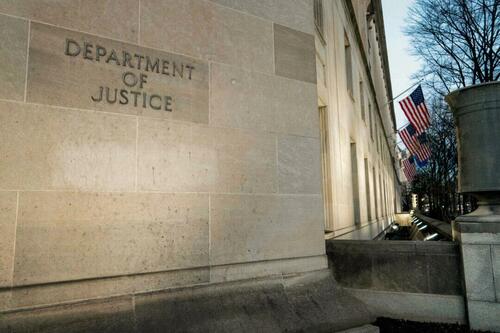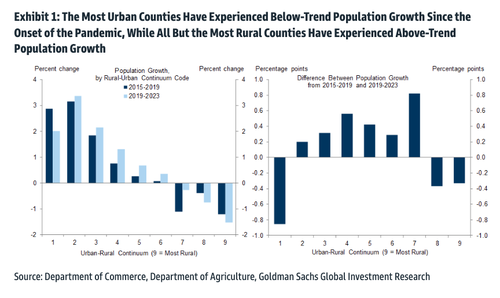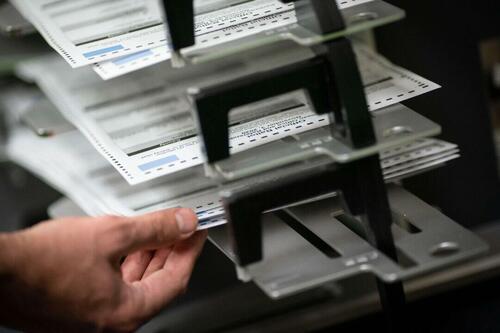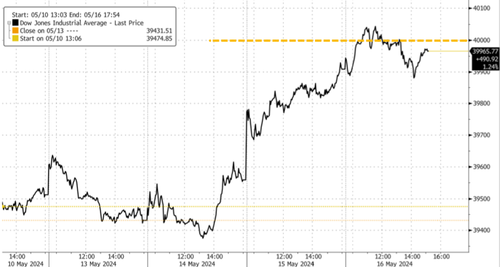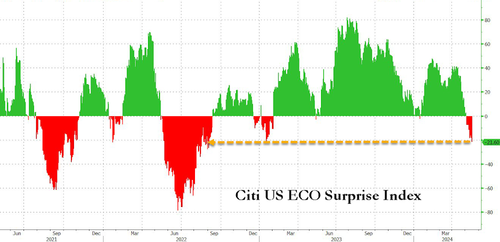Authored by Salena Zito via RealClearPolitics,

NEWTON SQUARE, PA – In childhood, Tasliym Morales was always interested in civic affairs, so it was no surprise to those who knew her that as soon she turned 18, she registered to vote. What did take her family and friends aback, however, was the political party affiliation she chose.
“Republican,” she says with a broad smile.
The striking mother of six is sitting at the head table of the Delaware County Republican Party chairman’s dinner, dressed in a rich red jacket topping a paisley dress discussing her reasons for choosing the Grand Old Party when most of her peers and family – Morales is black – were Democrats.
Explaining her choice is still amusing to her. “Democrats, reporters, strategists often come to our county because of how important the vote is here in determining which way Pennsylvania will go in big elections and often assume all black women are Democrats,” she explained of the Philadelphia collar county she calls home.
“I understand why because let’s be honest, many educated black women are Democrats,” she added. “However, I think more and more people of all colors are starting to vote for what is best for their personal lives and what is best for their community. Even more importantly, people are starting to vote like the other members of the community, rather than vote one way because of the color of their skin.”
Seated across the table from Tasliym was Alfe Goodwin, a former Philadelphia police officer and U.S. Army veteran who holds a doctorate degree in public policy and is running against incumbent Democratic Rep. Mary Gay Scanlon in Pennsylvania’s 5th Congressional District.
Goodwin, whose parents labored in the civil rights movement in Philadelphia in the 1960s, said she was initially a Libertarian and became drawn to the Republican Party because of a sense of purpose she felt among fellow members.
A shift in the polls toward Donald Trump among black voters has been met largely with skepticism by the national press and dismissed by talking heads on cable news – perhaps because they don’t know any person of color in their social or professional circle who would ever consider voting Republican.
Late last month, a Gallup survey found Democrats’ lead over Republicans among black Americans had dropped by 20 percentage points in the past three years.
Muhlenberg College political science professor Chris Borick said that in a swing state like Pennsylvania where polls show a tight race between Trump and President Biden and everything is decided within the polling margin of error, “no party can afford to lose even the smallest amount of their reliable voting bloc.”
“You cannot take any of your coalition for granted, this can be a problem for Joe Biden but also Bob Casey Jr. in the Senate race,” Borick said.
Pennsylvania is a prime example. Four years ago, Biden carried more than 90% of the black vote in the state according to exit polls. Black women that year gave Biden an impressive 94% of their vote, a number that secured the 20 critical electoral votes needed for him to win the state.
Monday’s New York Times/Siena Pennsylvania poll showed some interesting nuggets; voters like Morales and Goodwin are starting to show up in the numbers.
Morales, 41, explains the generational shift among black voters has been incremental, “But it has been moving for a while,” she said. “As a woman of color, I sit in Republican spaces so they can see me, hear me, and understand me.”
The issues that drive her are no different than those of her white or Hispanic neighbors. “I don’t like my whole check going to taxes,” she said. “I hate that people cannot freely express themselves religiously without retaliation. I don’t like that tolerance is one-sided.”
Morales said the first Republican she voted for was for George W. Bush, and she did it twice. Disapproving of Sarah Palin, she did not support John McCain in 2008 but voted for Donald Trump in the 2016 election.
In 2020, she could not bring herself to vote for Biden or Trump. “I couldn’t do it again,” she said of Trump. “The crazy thing is I agree with him on a lot of issues; I just hate his deliverance and disposition.”
Although Morales was a Nikki Haley fan and is undecided about the top of the ticket, her down-ballot support for Republicans is unwavering, “Dave McCormick? Yes he has my vote.” she said of the Republican businessman who is challenging Sen. Casey.
Youngstown State University professor Paul Sracic notes that 2024 is shaping up as a very close contest that will be decided by perhaps fewer than a couple hundred thousand votes, maybe less, in a handful of states – with the two candidates’ records on the economy looming over the election.
“Voters, regardless of race, have two recent economic records to compare,” Sracic said. “The perennial question for an incumbent is ‘Are you better off than you were four years ago?’ In 2024, Trump can add to that, ‘When I was last president…’”
At the same time, each major party is relying on a coalition of voters whom they have come to take for granted – perhaps at their peril. “If any part of that coalition were to switch sides, even in small numbers, it could change the result of the election. For example, if Republicans were to lose even a small percentage of evangelical voters, it could make a huge difference in the outcome,” Sracic said.
A similar dynamic exists for Democrats with various demographics, especially African American voters. “If we are talking about the potential voting behavior of middle-class black women, why wouldn’t we think that they might be responding to the same economic variables, and making the same comparisons, as middle-class white voters,” Sracic added.
Michele Reynolds agrees. In an interview in March, the first African American woman elected as a Republican in Franklin County to the Ohio state Senate said black middle-class or working-class voters have the same economic problems as their white neighbors.
Reynolds, who was hosting an event for Bernie Moreno in a former church in a working-class black neighborhood in Columbus, said no matter what color you are, the economy is failing middle America, “And people are looking at the message that everything is fine and they know it is not because they have to pay the bills,” she said.
While Trump holds a sizeable lead over Biden in Ohio in the RealClearPolitics Average, Reynolds warns that it is the Ohio Senate race between Democratic Sen. Sherrod Brown and Republican businessman Bernie Moreno where the black voters, men and women, could change everything for who holds the majority in the Senate come next January.
The event for Moreno that Reynolds held was filled with black, white, and Hispanic voters looking for someone to hear their concerns. Nanette Taylor, a local entrepreneur, handed people Moreno signs as they left. “Events like this go unnoticed,” she said. “We are tucked away off the highway and not many people are paying attention. Then when Election Day [comes] and what most folks thought would happen doesn’t, they wonder how did we miss that?”
Salena Zito is a reporter for the Washington Examiner, Wall Street Journal contributor, and co-author of “The Great Revolt: Inside the Populist Coalition Reshaping American Politics.”



